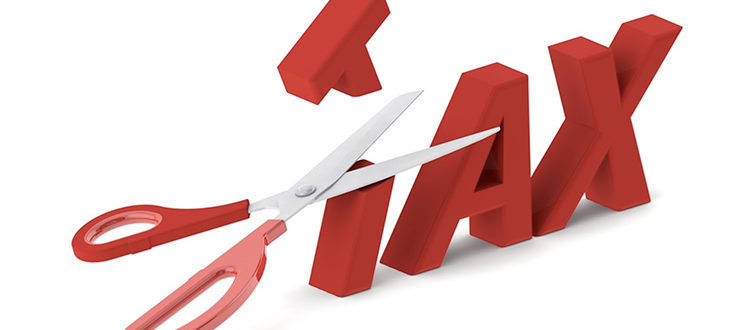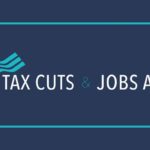Qualified business income deduction regs proposed
Journal of Accountancy, August 2018 — The IRS issued proposed regulations on Wednesday regarding the qualified trade or business income deduction under Sec. 199A, which was enacted by P.L. 115-97, the law known as the Tax Cuts and Jobs Act (TCJA) (REG-107892-18 (https://www.irs.gov/pub/irs-drop/reg-107892-18.pdf)). At the same time, it issued Notice 2018-64 (https://www.irs.gov/pub/irs-drop/n-18-64.pdf), which provides guidance on how to compute W-2 wages for purposes of the deduction, along with FAQs (https://www.irs.gov/newsroom/tax-cuts-and-
jobs-act-provision-11011-section-199a-deduction-for-qualified-business-income-faqs). The proposed rules include a way that taxpayers can group or aggregate separate trades or businesses and an anti-abuse rule designed to prevent taxpayers from separating out parts of an otherwise disqualified business in an attempt to qualify those separated parts for the Sec. 199A deduction.
The deduction, which is in effect for the first time in 2018, allows owners of sole proprietorships, partnerships, trusts, and S corporations to deduct 20% of their qualified business income (QBI).
The deduction is generally available to taxpayers whose 2018 taxable incomes fall below $315,000 for joint returns and $157,500 for other taxpayers. The deduction is generally equal to the lesser of 20% of the taxpayer’s QBI plus 20% of the taxpayer’s qualified real estate investment trust (REIT) dividends and qualified publicly traded partnership (PTP) income, or 20% of taxable income minus net capital gains. Deductions for taxpayers above the $157,500/$315,000 thresholds may be limited; the application of those limits is described in the proposed regulations.
The IRS is requesting comments on all of the proposed rules, which must be received within 45 days of the date they are published in the Federal Register. The Service noted that, although the rules will not be effective until published as final in the Federal Register, taxpayers may rely on them until then.
The regulations address a variety of subjects.
Prop. Regs. Sec. 1.199A-1 contains the operational rules, including how to determine the deduction for taxpayers with incomes at or below the threshold amounts and for those with incomes above the thresholds. It also contains definitions of the following terms: aggregated trade or business, applicable percentage,
phase-in range, qualified business income, QBI component, qualified PTP income, qualified REIT dividends, reduction amount, relevant passthrough entity (RPE), specified service trade or business (SSTB), threshold amount, total QBI amount, unadjusted basis immediately after acquisition (UBIA) of qualified property, and
W-2 wages.
The definition of a trade or business is also in this section; the IRS decided to apply the definition of “trade or business” contained in Sec. 162(a) because the definition of trade or business under Sec. 162 is derived
from a large amount of case law and administrative guidance interpreting the meaning of trade or business in the context of a broad range of industries. This will provide for administrable rules that are appropriate for the purposes of Sec. 199A and that taxpayers have experience applying, and the IRS believes it will reduce compliance costs, burden, and administrative complexity.
Prop. Regs. Sec. 1.199A-2 contains rules for determining W-2 wages and the UBIA of qualified property, both of which are components in calculating limitations on the deduction. The rules for determining W-2 wages are based on the rules under the repealed Sec. 199 deduction for qualified domestic production activities, except, unlike Sec. 199, the Sec. 199A W-2 wages are determined separately for each trade or business.
Prop Regs. Sec. 1.199A-3 restates the definitions in Sec. 199A(c) and provides additional guidance on the determination of QBI, qualified REIT dividends, and qualified PTP income.
Prop. Regs. Sec. 1.199A-4 contains aggregation rules allowing separate trades or businesses to be grouped when applying the Sec. 199A rules. The IRS rejected comments suggesting the application of the grouping rules under Sec. 469, the passive loss provision, and instead proposed a flexible method that looks into common ownership, shared services, and other commonality, but specifically excludes SSTBs from being aggregated under the rules. The regulations impose a duty of consistency that requires that once multiple trades or businesses are aggregated into a single aggregated trade or business under Sec. 199A, taxpayers must consistently report the aggregated group in subsequent tax years. Aggregation allows for ease of administration and was one of the AICPA’s recommendations (https://www.aicpa.org/content/dam/aicpa/advocacy/tax/downloadabledocuments/20180221-aicpa-sec-99a- qbi-comment-letter-faq.pdf) in a letter it sent to the IRS in February.
Prop. Regs. Sec. 1.199A-5 defines specified service trades or businesses and the trade or business of performing services as an employee. The regulations include an anti-abuse rule designed to prevent taxpayers from separating out parts of what otherwise would be an integrated SSTB, such as the administrative functions, in an attempt to qualify those separated parts for the Sec. 199A deduction.
Prop. Regs. Sec. 1.199A-6 contains special rules for RPEs, PTPs, trusts, and estates that these entities may need to follow for purposes of computing the entities’ or their owners’ Sec. 199A deductions.
Prop. Regs. Sec. 1.643(f)-1 addresses concerns regarding the abusive use of multiple trusts by confirming the applicability of Sec. 643(f). Sec. 643(f) permits the IRS to issue regulations to prevent taxpayers from establishing multiple nongrantor trusts or contributing additional capital to multiple existing nongrantor trusts in order to avoid federal income tax.
Notice 2018-64, issued contemporaneously with the proposed regulations, contains a proposed revenue procedure with three methods for calculating W-2 wages (1) for purposes of the limitation based on W-2 wages to the amount of the deduction for qualified business income under Sec. 199A; and (2) for purposes of the reduction to the Sec. 199A deduction based on W-2 wages for certain specified agricultural and horticultural cooperative patrons.
© 2018 Association of International Certified Professional Accountants. All rights reserved.



